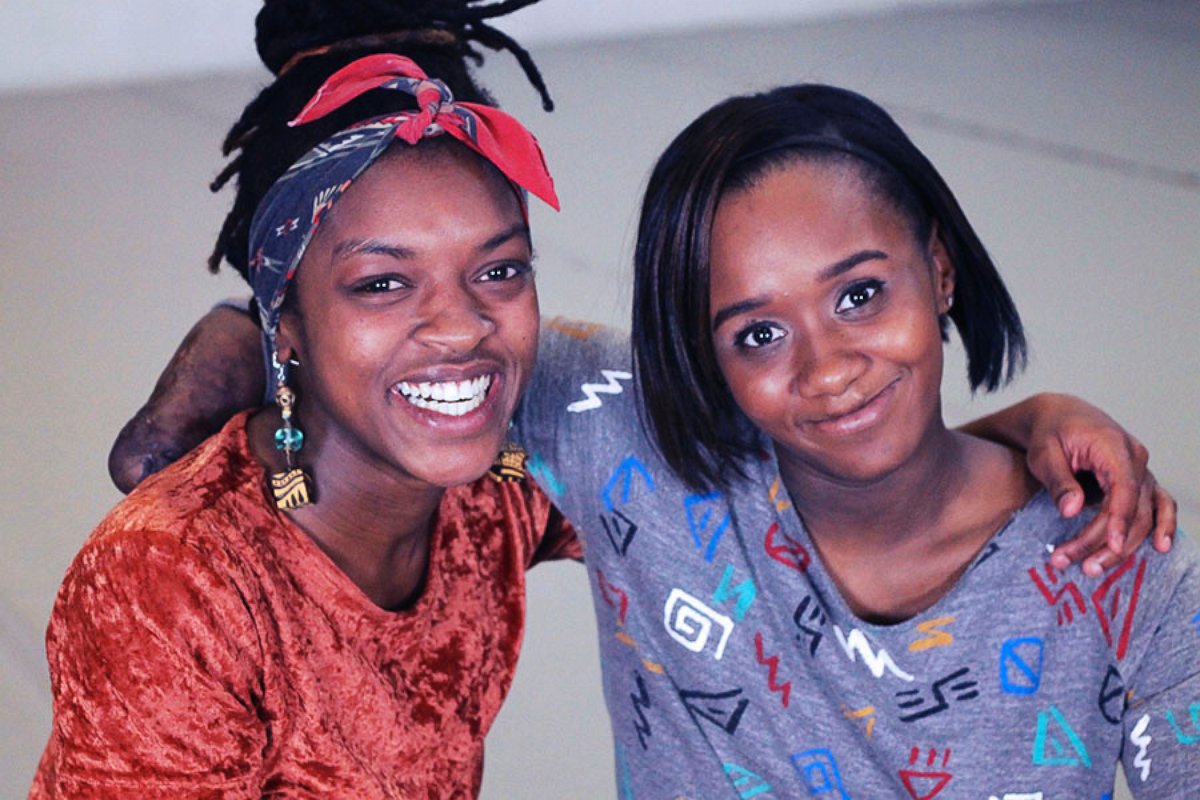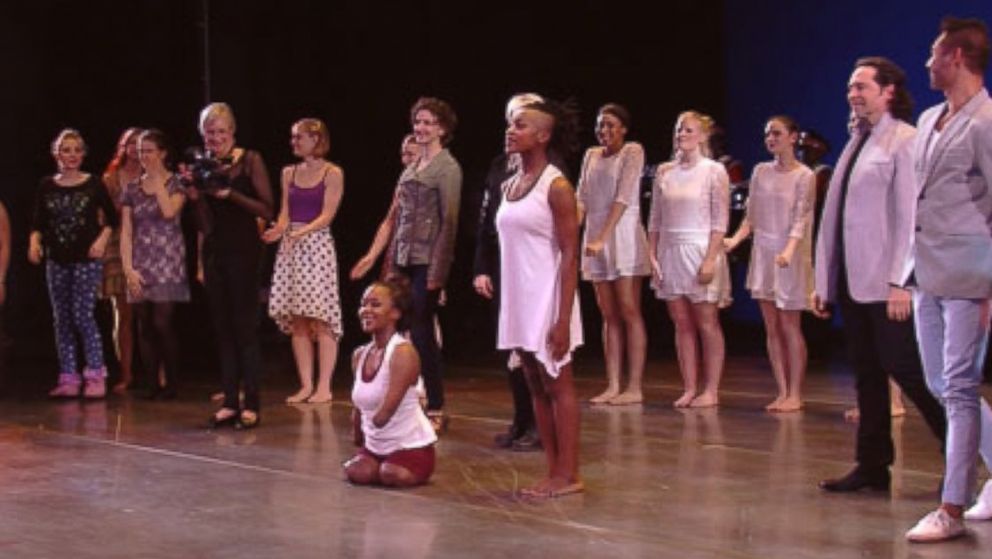Two Sisters, One an Amputee, Use Dance to 'Speak' Without a Voice
Dancing sisters are the subject of new documentary.
May 30, 2014— -- When Kiera Brinkley works on choreographing a dance, she loses herself in her work. Sometimes, the 20-year-old becomes so lost in the movements she forgets for a second that she lacks the hands, fingers and feet to fully carry out her vision.
“I picture myself with arms and legs. When I come to the class [to teach the choreography], I forget don’t have any,” Brinkley told ABC News. “I’m like, ‘Oh, I’m sorry about that,’” to the other dancers.
Brinkley became a quadruple amputee after contracting pneumococcal sepsis, a bacterial infection in the blood, at age 2. The infection affected her arteries and damaged her extremities. Doctors had to amputate portions of her arms and legs to save her life.
Only 2 years old at the time of her amputation, Brinkley ended up having a key friend to help her stay as mobile as the other kids: her younger half-sister, Uriah Boyd.

Brinkley and her sister will be the subjects of a documentary called “Soar,” currently being edited, that tracks their lives as they deal with becoming adults and full-fledged dancers at different companies in Portland, Oregon.
Boyd was only a month old when Brinkley lost her limbs. As Boyd grew up, she wanted to emulate her older sister. Boyd even crawled like Brinkley, scooting on her diaper, instead of using her arms and legs. When Brinkley was put in a dance class, she taught her sister movements and they practiced together.
As the pair became older, they became so close they could communicate without speaking. The pair would practice movements or just play together using certain dance, almost gymnastic, movements.
The documentary was inspired by the first dance piece the pair performed together, which was inspired by their close relationship.
"Soar's" director, Susan Logeais, told ABC News she was amazed by both of the sisters’ abilities.
“I was mesmerized and blown away,” said Logeais, who was asked by the choreographer to visit the show. “Uriah moved in a very different way ... because she grew up moving in a way that Kiera has moved.”

Logeais said she was impressed by the pair’s ability to make their movements look effortless.
“Things just flow and the body seems fluid,” said Logeais. “It’s an effortless, flowing quality and a synchronicity between them even though they’re doing different steps.”
While the pair amazed Logeais, Boyd said initially she was worried when she started dancing that she would only be remembered as “Kiera’s little sister.”
“Initially, I felt a little bit stunted by my sister already being a dancer, because I knew the comparisons were being drawn,” said Boyd. “People knew I was Kiera's sister.”
However, Boyd said she ended up falling in love with performing.
“I perform and I forget that I’m performing,” said Boyd. “What make me love dance so much is just how it feels. ... I always feel warm and happy inside. That feeling just transcends to my face.”
Brinkley graduated from high school and thought she would leave dance behind to become a medical assistant. But she couldn’t get dance out of her head and kept performing at various events. Eventually, she was approached by a member of a professional dance company in Portland.
Pint-Sized Dancer Inspires Despite Genetic Disorder
However, after being included with other professional dancers, Brinkley said she struggled to fit in, especially without her sister.
“I was terrified. [Uriah] was always my security blanket, almost,” said Brinkley. “I didn’t have to verbally speak on how I couldn’t do something, I just had [Uriah].”
Brinkley is now a full-fledged member of the Polaris Dance Theatre dance company, where she both performs and choreographs dance.
Boyd said seeing her sister in a professional company has helped her develop her own dance skills and allow both of the sisters to be more independent from one another.
“I can learn a lot of things by watching her,” said Boyd.
After graduating high school, Boyd joined another dance company in the area. She said she’s debated doing other work, including working in construction, but for now dancing remains her main passion.
“Every time I stop for a while and I write or draw. It always comes back,” said Boyd. “Dance has always been that thing where it’s in my life. I’m never really chasing it.”
Brinkley said she's come to accept that dance will always be a huge part of her life, even though she believes her physical limitations will mean a shorter dance career. The rough movements onstage affect the bones in Brinkley's leg and require periodic operations to reshape the bone.
"When I got serious about dance, it was an expression, [it's] my voice without speaking," said Brinkley.




